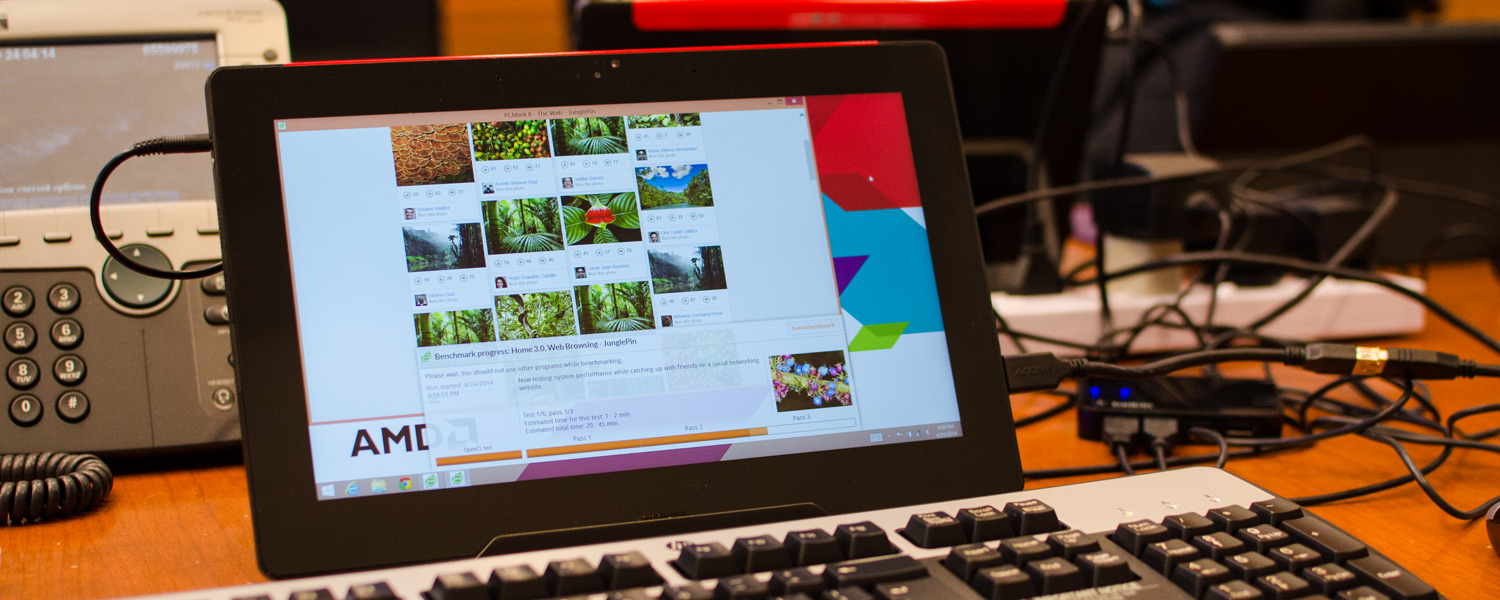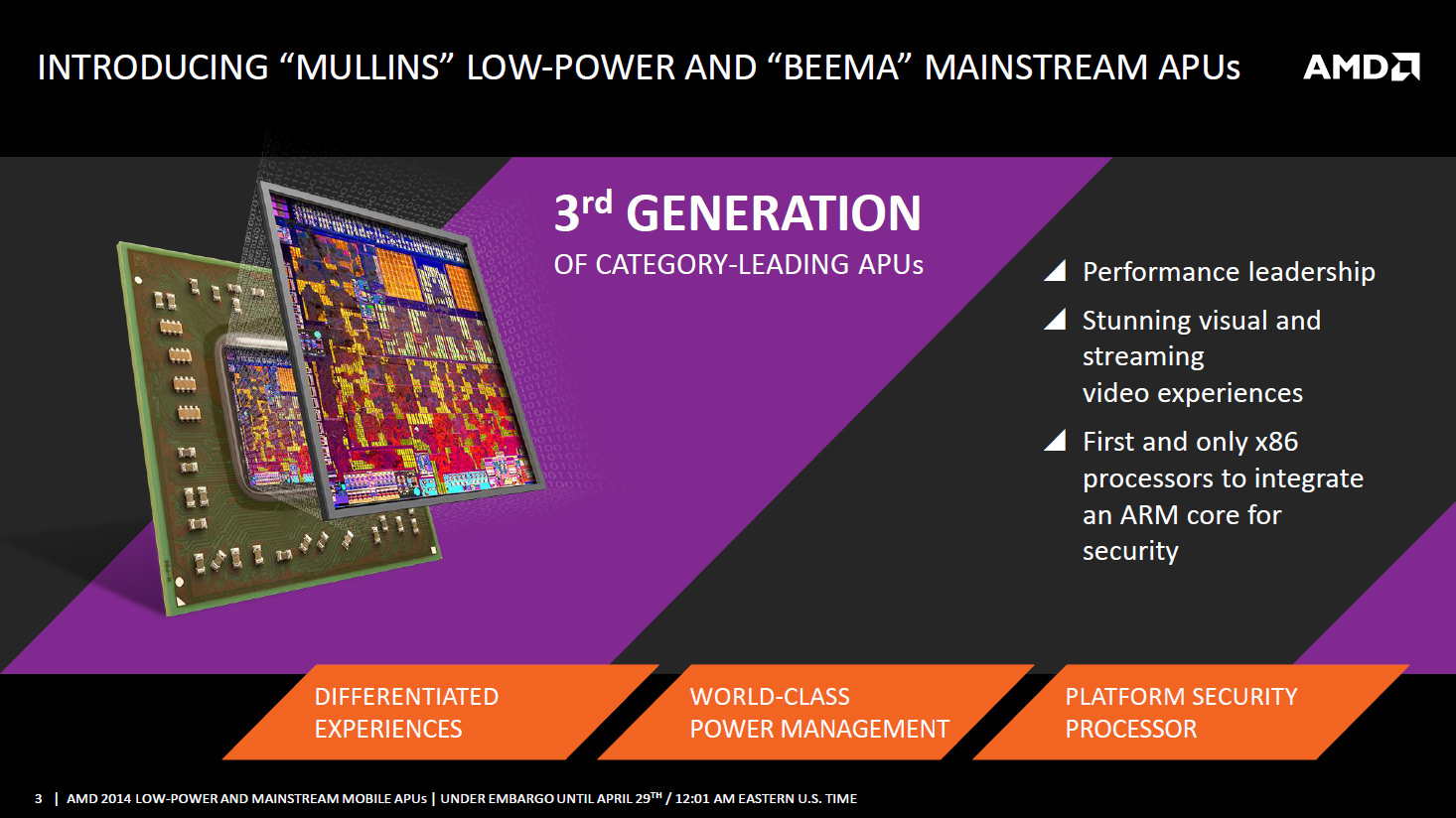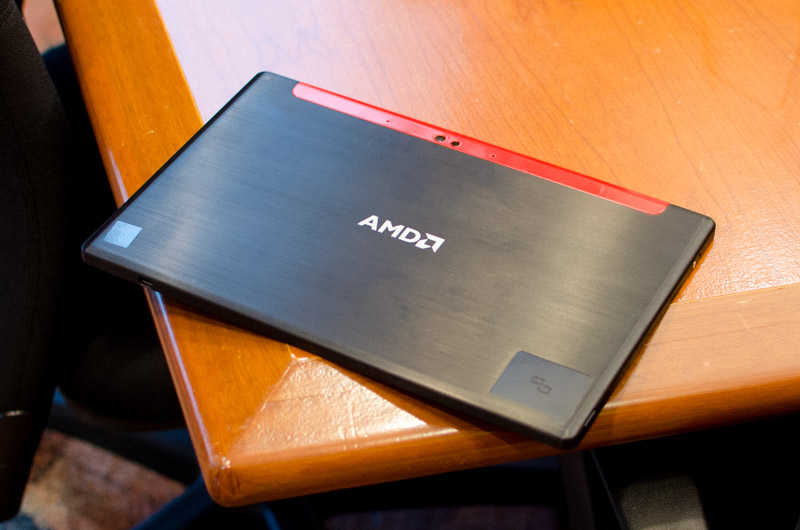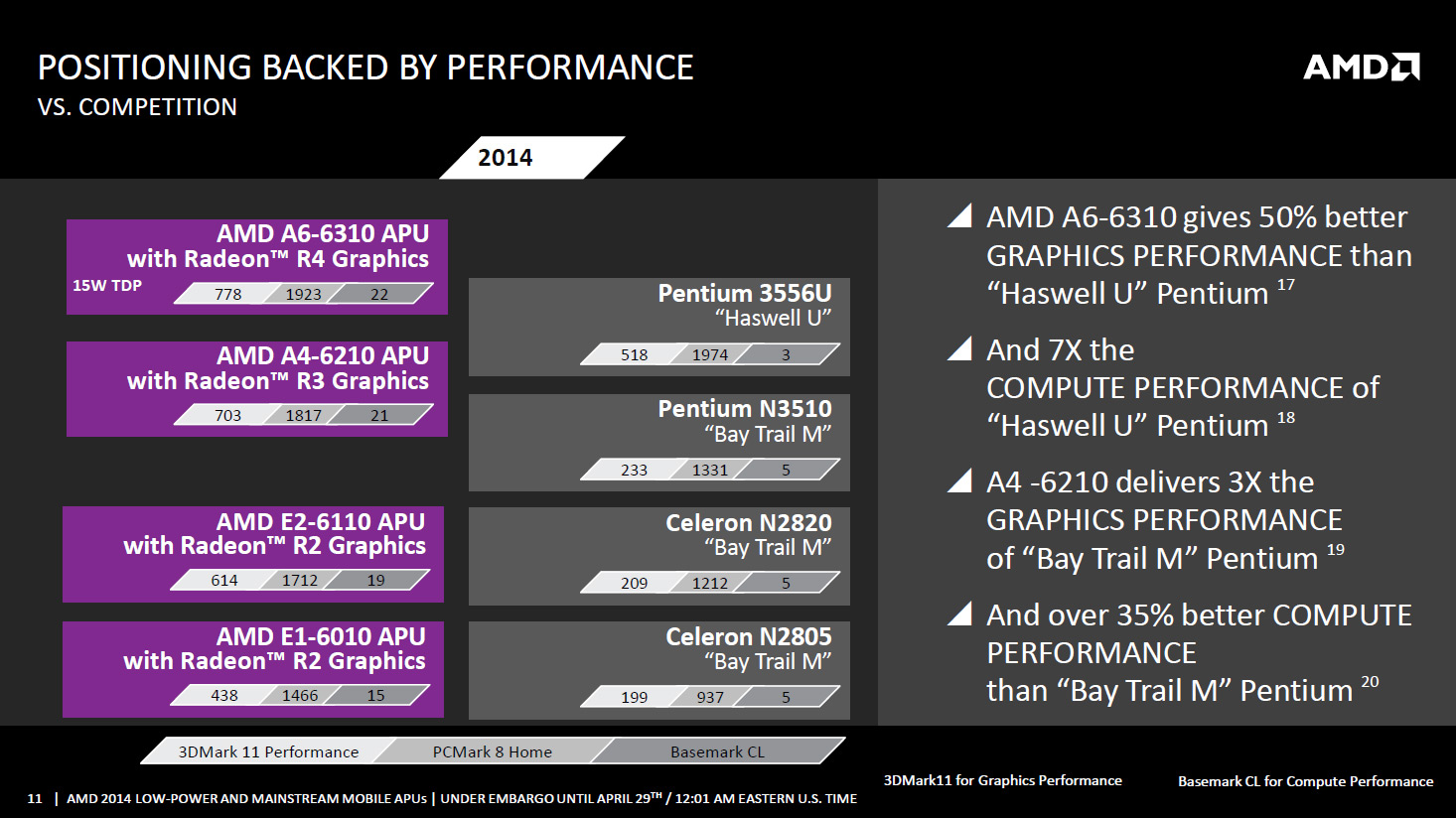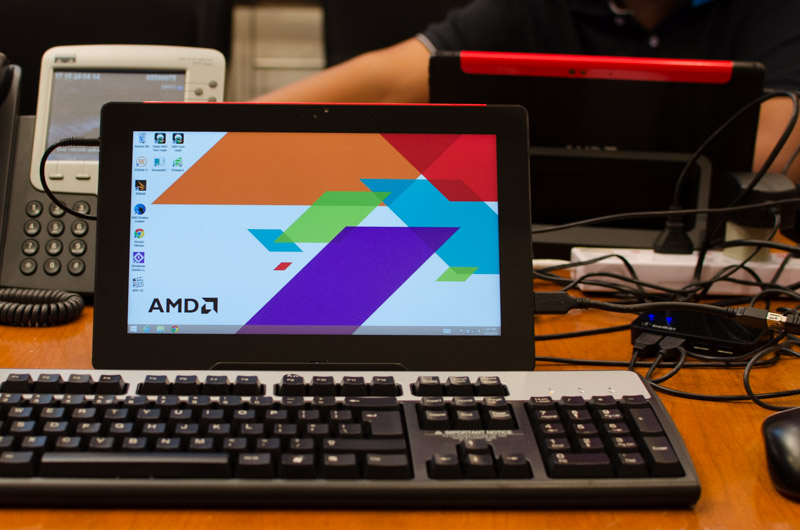Final Thoughts
When the executives present at AMD's Singapore office were describing the new features present in their new low-power mobile chips, I'll admit that what they showed made me excited. Everything pointed to chips that are energy efficient while still providing performance unequalled by its x86 (or even ARM) competitors.
But PowerPoint slides and executive summaries are only good to show the chips on paper; it's the actual hardware itself that will tell the final story. And from what I experienced using and benchmarking Mullins in the Discovery reference tablet, the story is one that paints AMD as a winner.
In CPU-heavy benchmarks, AMD's Mullins (A10 Micro-6700T) tablet was, on average, 31% faster than an Intel Bay Trail-T Z3740 tablet. But GPU is where it really dominated the Bay Trail tablet by a whopping 81% margin on average. It falls behind in memory and cache performance, but across all the benchmarks I performed we're looking at a performance advantage to Mullins of 36% (which jumps to 47% where memory or cache aren't limiting factors).
Of course there are a few things to be aware of here. Firstly, the Bay Trail SoC used wasn't Intel's highest-end (the Z3770) whereas the A10 Micro-6700T is the flagship Mullins APU. This is mostly due to a lack of Z3770 products in the wild, but from what I gather the top-end Z3770 is around 15-20% faster than the Z3740.
When factoring in this performance jump on Intel's side when using the Z3770, AMD still has a lead of around 15-20% across the board, and a significant lead in AMD's stronghold: graphics. Even if I ran the benchmarks on battery power, expecting a performance drop of around 10%, Mullins would still come out on top, which is a huge achievement for AMD.
In AMD's own slides, they see the A10 Micro-6700T competing more with Intel's Haswell Y chips, while the Micro-6400T and Micro-6200T compete with Bay Trail-T. According to their data, the 6400T is 15% faster than the Z3770, and I wouldn't be surprised if this holds true.
Unfortunately I didn't have any Haswell Y hardware to test with, so I can't validate AMD's claims that Mullins is competitive with it despite having half the SDP and nearly a third the TDP. However, again this seems very likely, as Mullins is very competitive up against 10W desktop Bay Trail and 25W desktop Kabini parts that I tested with.
While Mullins is often behind the 25W Athlon 5350 Kabini APU, it's actually faster than the lower-end Sempron 3850, and almost equal to the Athlon 5150. AMD certainly isn't bending the truth when it says Mullins this year is at the performance level of Kabini last year, at just a fraction of the power consumption. Simply put, this is huge for the company and the low-power computing market.
As I didn't have any hands-on time with Beema, it's difficult to make a judgement about their 15W part just yet. The top-end Beema APU (the A6-6310) is supposed to have better performance than top-end Kabini (eg. the Athlon 5350/A6-5200) at a significantly lower TDP, and based on what I've seen from Mullins, this seems very likely.
With increased power consumption almost always yielding diminishing returns on the same CPU and GPU architecture, it'll be interesting to see just how much faster Beema is, but so long as performance is at least equal at a lower TDP, this will be another win for AMD.
Finally, out of all the data and statements I received from AMD executives, the thing I'm hoping to be most accurate is that we should actually see Beema and Mullins products in the wild. Temash, Mullins' predecessor, wasn't a particularly competitive product and was seldom seen in actual OEM products. Kabini laptops were seen from time to time, but not nearly as often as Intel-powered machines.
AMD has really focused on improving energy efficiency and performance simultaneously, and their new low-power APUs - which are looking fantastic, going off what I saw in Singapore - have garnered significant interest from hardware partners. If we see Beema and Mullins in more than just a few devices, AMD might be able to claw their way back into the market currently dominated by behemoth Intel.
